Badlands Media will always put out our content for free, but you can support us by becoming a paid subscriber to this newsletter. Help our collective of citizen journalists take back the narrative from the MSM. We are the news now.
This article will have an immediate follow-up piece that I think will be of great interest to this community. However, in order to get to that major payoff, we first need to ‘chop some wood,’ as Steve Bannon would say, meaning we need to cover some critical background information. Stick with me on this.
Preface
The infamous Sword Dance.
It’s an event that has become iconic in our movement, analyzed ad nauseum by the most brilliant minds among us, and spotlighted by the most notorious Anon of them all.
For me, it held additional significance. It took place on my birthday, exactly one week before my wedding in the Dominican Republic. I vividly recall sitting on the beach in the days after the Sword Dance, reading the headlines from the apoplectic MSM, chuckling to myself in satisfaction over my innate instinct to support Donald Trump from the moment he stepped on that escalator.
Vindication is certainly intoxicating.
He was winning. We were winning. Things felt right, as the glower of the Obama and Bush years began to ease. America was back. What a triumph of We The People.
And then, tragedy.
A few months after the wedding, my older brother’s body was found in the Rappahannock River. We later learned he had fallen off a boat and left for dead. (The parallels to the recent news coming out of the Obama camp is not lost on me.) He was a staunch Republican, overly polite and pragmatic, who had voted for Trump, though he ribbed me for my zeal in the man. He likely rolled his eyes when I texted him and my father on Election Day 2016— jacked up with emotion as I walked out of the polling station— that General Flynn was engaged in a silent civil war against Hillary Clinton and her cohorts, and the fate of our Republic hung in the balance. (I was later reminded of doing this when we went to review his received text messages during the criminal investigation of his death.)
Almost 18 months to the day before he was killed, we stood side by side and watched helplessly as our younger brother succumbed to a three year battle with a Stage 4 Glioblastoma (brain cancer— same affliction that purportedly killed No Name). He choked to death on his own mucus in our mother’s arms. It was horrifying.
Death has a way of invoking introspection. It both softens and hardens your heart, while driving your mind to search for answers. A metamorphosis occurs that cannot be calibrated by any tangible metric. You change, for better or for worse.
To say that my reality became “surreal” upon learning that the man I had asked over more deserving candidates to do a scripture reading at the funeral—out of concern that he needed closure, due to his proximity to the death— was now under investigation for killing my older brother, would be quite the understatement. Little did I know, we were embarking on a five year war against all facets of corruption to achieve justice, including an incredibly dramatic—and rare— moment when one of the three judges who worked on the case rejected a sweetheart plea deal that was struck in earnest between the corrupt prosecutor and overprivileged defendant, eerily similar to how it went for Hunter Biden.
A few months after his death, as I searched inward for answers, the Vegas Shooting occurred, and the rest of the world joined me in somber reflection.
Just weeks after the shooting, an Anon appeared, offering cryptic musings in a style that was not entirely unique to 4chan/pol. He was met with the same slurs and cynical rebuke as the others before him—such as FBIAnon and WHInsiderAnon— had encountered. Though this one did not sign his name— not yet—and the message he carried was one of promise and hope and optimism and Justice, which I’ll admit I was quite vulnerable to receive.
However, it wasn’t the prophecy of arrests of America’s political villains that caught my eye with this anonymous “insider.” It was the cryptic recounting of the Sword Dance in Saudi Arabia. I was instantly transported back to the Dominican beach, a distant 5 months before, to the happy memory and joy of being surrounded by friends and family.
The Anon’s emphasis on SA (Saudi Arabia) had piqued my interest, and not just because of the Sword Dance. The speculation across the internet was that somehow the young Crown Prince was connected to the recent tragedy in Las Vegas, perhaps the intended target. I saw that he was scheduled to be coronated in a royal ceremony the upcoming Saturday— November 4th, 2017— and the Anon had stated,
“Get the popcorn, Friday & Saturday will deliver on the MAGA promise. POTUS knows he must clean house (gov't) in order to 'free up' and demonstrate who has authority in order to pass important legislation.”
We went to visit my in-laws, and confined indoors by bad weather, I scoured the internet for livestreams of the ceremony and news. At 7:00 PM that evening, the Anon returned to offer more “crumbs,” now focusing entirely on Saudi Arabia. He stated that Martial Law had been declared there, asking why it was relevant.
I checked the news; He was right.
Upon being coronated officially as Crown Prince, Mohammed Bin Salman— who had been the Saudi Defense Minister (in charge of military) for the previous 5 years— had rounded up “40” of his relatives and imprisoned them in the Ritz Carlton hotel, accusing them of corruption and treason. (I later learned through my research that “40” is a colloquial term used in Arabia in the same way we in the west would say “dozens”— 40 years in the desert, 40 days and 40 nights, the fable “Alibaba and the Forty Thieves,” etc.)
Perhaps it was the sentimental memory reading about the Sword Dance while on the beach back in May, or the inexplicable datapoints surrounding the Vegas Shooting that were being wiped from the internet, but as I followed my instincts and dug into this MBS (Mohammed bin Salman), who is my peer in age, I began to feel a connection to him.
That connection grew when I learned that between 2001 and 2002, two of MBS’s half-brothers died almost exactly a year apart to the day. From an NYT article by Ben Hubbard— a “biographer” of MBS. (I’ve read his book, and while he did a fine job of gathering data, his overall analysis of MBS as a malevolent figure is hot garbage.)
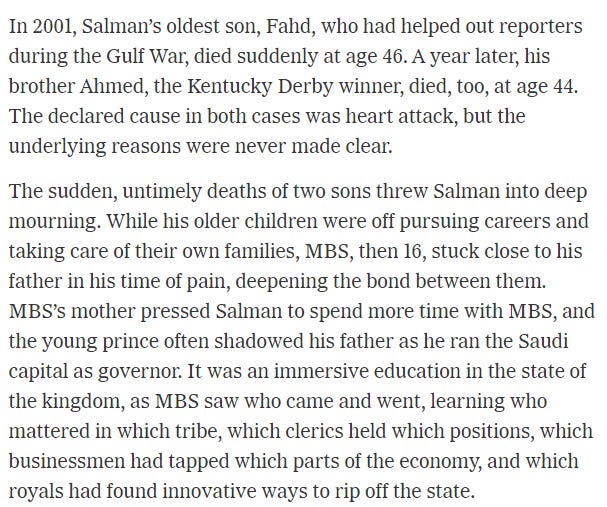
The Anon (Q) seemed like the real deal, but even if he wasn’t, there was something special going on between Donald Trump and Mohammed bin Salman. Even the New York Times admitted it.
Contrast Trump’s relationship with the Crown Prince (MBS) and his relationship with Alwaleed bin Talal, whom the NYT attempts to distinguish and segregate from the Saudi Royal Family.
And finally, the moves MBS and his father made to depose the would-be Crown Prince, and the prince/minister in charge of the Saudi military, both cousins of MBS who were arrested and stripped of all powers.

Many may be quick to presume that these moves were made under the direct guidance of Trump; I, too, believed this, once upon a time. But I developed an insatiable appetite for MBS and his country, and after countless hours of research, analysis, and observation, I have come to understand that the path on which the young Crown Prince has taken likely began at the age of 16, during that year where his uncles died, and specifically on the morning of September 11, 2001.
From Hubbard’s article:

Read that last part again, and think about what it means.
We learn so much from this one passage.
The first is that MBS—who rejected the elitist, globetrotting lifestyle that all of his young relatives embraced, and instead focused on learning about Arabia by shadowing his father— grew up consuming 1980’s and 90’s American culture like myself and the other millennials from the Badlands crew.
And the second is that MBS had a very similar reaction witnessing 9/11 in real time that almost every American did. He was shocked, then scared, then angry; filled with righteous indignation and a deep desire for retribution. (The attack had a similar effect on Noor bin Ladin.)
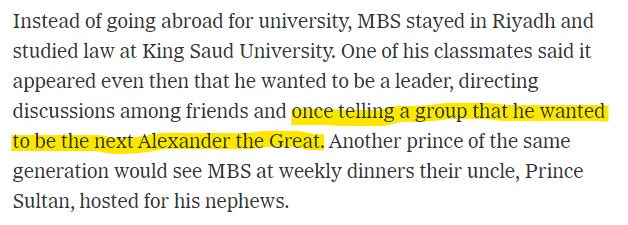
Make no mistake, friends, the Crown Prince is no agent of Donald Trump— by which I mean, he was not set on this path by Trump’s influence. He was walking this path when Trump entered office, like two warriors meeting on the road, each on their own quest to slay the same dragon.
Arabic Names
Before we go any further, allow me to provide some quick insight on how names work in Arabic, as I realize that it can be a major obstacle. It’s actually pretty simple, and not too different from the naming conventions of medieval Europe, or Game of Thrones, using a system of patronym to identify an individual.
If your name was John, and your father was Roger, and your family name was Smith, in order to distinguish yourself from other John’s sired by a Roger, you would say:
“I am John, son of Roger, of the House Smith.”
Though in less formal settings, you may simply say, “John, son of Roger.”
If you were somebody of significance, you may have a descriptive laqab (honorary title)— what the Romans called an agnomen:
Francis “The Swamp Fox,” son of Benjamin, of the House Marion.
Thomas “Stonewall” Jackson; Dwayne “The Rock” Johnson.
(Much like Europe, honorary titles are no longer common.)
In the Middle East, the patronym system works the same way. Everybody has a single name, and is identified through their patriarchal lineage— which is very important, because the entire societal structure is based on a tribal system of clans. The nuclear family is the base unit; many families make a clan; many clans make a tribe; many tribes make a “Skull,” with additional distinctions within these groupings.
Syrian President Bashar al-Assad’s last name means “the lion.”
During the 19th century, his ancestor was given the laqab al-Wahsh, meaning “the wild beast,” because he was such a powerful fighter. In 1927, the family changed it to the more noble version. The al- prefix in a surname can also denote a person’s place of origin, such as place “Al,” used in the context of “Al Saud,” is a dynastic designation referring to a specific family. “Ahl” is a broader term— “Ahl al-Bayt” means “People of the House [of the Prophet].” The Shia Muslims limit this group to Muhammad’s cousin, daughter, son-in-law, 2 grandsons, and 11 wives. The Sunni Muslims have expanded the meaning to include all members of the Banu Hashim (Hashemite Clan— see below).
Only Saudi Arabia still uses these articles in their names, while others have dropped them and moved toward a more westernized convention. “Ibn”
It’s important to remember that while Arabic is a phonetic language, it utilizes its own alphabet of glyphs, which is why you will encounter a variety of spellings for the same word or name of the same person, when they are romanized for western readers.
The Crossroads of Continents
Geography is the core foundation for understanding history.
In order to understand the present, you must understand the past; and in order to understand events and the actions of people, past or present, you must understand the physical environment in which they operate.
Let us begin with the most broad view, and narrow in on the specific.
When it comes to understanding the Middle East, it is critical to grasp that British Intelligence (and later, its protégé: the CIA and Mossad) have spent at least the past 200+ years manipulating this region of the world with the most nefarious intent, as it has done in other places. (Often, these manipulations were gamesmanship between competing players within the British imperial hierarchy, jockeying to improve their own position at the others’ expense.)
For that reason, the Middle East is among the most complicated, tragic, and convoluted histories in the world (the most complicated and tragic being Russia). For the sake of brevity, we will have to be selective in our observed datapoints— as is the case in all attempts to analyze history.
This is a highly reductive map of my own making denoting the major regions of the Middle East, since ancient times. The designations are somewhat arbitrary, and certainly biased from my specific course of study, but still provide a macro context for our discussions. The area identified as Arabia is based on how the leaders of the 1916 Arab Revolt (King Hussein and his son, Prince Faisal) defined the region, as well as the current members of the modern Arab League, an regional organization of nations formed in 1945.
Note the relative size of Arabia, and how it is the natural geographic axis of the entire region.
This map is from a 2014 Vanity Fair article (credit where it is due) which accurately shows a more nuanced breakdown (if incomplete) of the more modern Middle East (past 200-300 years) with socio-political considerations. I could show you 40 more maps that would give 40 different regional designations— because all history is interpretation.
The Bedouin
The Bedouin, or badawī (desert dweller) in Arabic, are the nomadic tribes that inhabit the Arabian peninsula, the Levant, Africa, and modern-day Syria and Iraq. They originated from the Syrian and Arabian deserts, and spread across the Middle East and Africa during the Golden Age of Islam. They are contrasted with the ḥāḍir (sedentary people), though it is universally accepted that all ḥāḍir originated as Bedouin, which can likely be said of all human societies— that we were all originally nomads.
In Arabia, for both the ḥāḍir and Bedouin, diplomacy and politics—as well as personal identity— operate through a tribal system, which are built on bloodlines with the family unit as the core building block.
Historically, there has been symbiotic relationship between the ḥāḍir and Bedouin, though in the modern era there has been a growing political pressure to marginalize those who live “off the grid.” Current estimates put the global Bedouin population at 25 million, with one of the largest concentrations (2 million) remaining in Saudi Arabia. (Total population of Saudi is over 32 million.)
There is a mystical, esoteric aspect to the Bedouin.
Civilizations of the ḥāḍir come and go, but the Bedouin have remained a constant since the dawn of man. They maintain an oral history that is both collaborative and decentralized. Tribes that meet will share stories, and if one tribe fades from existence, the other tribes carry their stories and history forward. Unlike a centralized, written historical record— which can be altered and manipulated— it is nearly impossible for any authority or government to alter a decentralized history that is maintained through word-of-mouth.
For example, the Bedouin accounts of ancient Babylon, such as the origins of the practice of blood magic and the gods they worshipped, were included in the writing of the Quran— data points that are not corroborated in the Bible or any other more ancient text. This information was finally corroborated and confirmed by 20th century archaeology.
Through my research, I have found a lot of commonality between the Bedouin and the American Spirit. They are fiercely independent, self-reliant, with a militant—yet God-fearing— disposition, while also recognizing the practical need for diplomacy and trade. Their strength is drawn both from their esoteric knowledge of the desert, and how to traverse it safely.
High-born Saudi boys from the ḥāḍir who come of age have traditionally been sent to live with an allied Bedouin tribe, so they can learn the secrets of desert survival, as well as the Bedouin strength. (Similar to why boys in America would join the Boy Scouts or other outdoorsmen organizations.) The most elite forces in the Saudi military recruit directly from the Bedouin tribes, forming units based on tribal affiliation, to instill bonds of camaraderie, but also to avert tribal feuds impacting military efficacy.
Shown here are examples of the traditional Saudi Bedouin garb.
Many of us today see images of Arab women in clothing like this and immediately associate it with the west’s cultural perception of the misogyny of Islam. The truth is that desert-dwellers dressed like this for thousands of years prior to the emergence of Islam— to protect their skin from both the sun and wind-blown sand. In fact, the Prophet Muhammad had red hair and a fair complexion, as did many of his kin.
Arabia — A Brief History
Over 1500 years ago, a Bedouin warrior emerged from the desert and entered the town of Mecca.
The warrior was a ḥanīf—those that practiced the monotheistic religion of Abraham—he was also a direct descendant of Abraham.
According to the texts of all three major religions, as well as Greek and Roman historians, Nimrod—the great-grandson of Noah— was a wicked king of ancient Babylon who claimed to be God, promoted idolatry (polytheism and blood magic) and constructed the Tower of Babel.
In the Quran, it is written that Nimrod set himself against the will of God.
One day, Nimrod’s astrologers told him that a baby— also a descendant of Noah— would be born and bring an end to idolatry. So Nimrod ordered the slaughter of all newborns in Mesopotamia. The baby was Abraham, and his mother escaped into the wilderness, where he was born.
Abraham eventually confronts Nimrod to end the practice of idolatry, and Nimrod orders him burned at the stake— fire being one of the main focuses of Nimrod’s godless worship. Witnesses watched as Abraham emerged from the fire unscathed, and they began to believe that he was a prophet of God. Worried that his rule was in peril, Nimrod challenged Abraham to a public debate, believing that he could prove Abraham’s concept of a monotheistic God to be a lie.
During their debate, Nimrod asked Abraham what his God could do that Nimrod could not? Abraham stated that God was the giver of life and death. In response, Nimrod had two prisoners brought out onto the debate stage. He executed one and pardoned the other, and told Abraham that he, too, was a giver of life and death.
Abraham asked, "Well, my lord God makes the sun rise from the East. Can you make it rise from the West?" Confounded and humiliated, Nimrod banished Abraham from his Mesopotamian kingdom. The belief is that Abraham eventually settled in Mecca, constructing a stone sanctuary upon the same foundation where his ancestor, Adam (from the Garden in Genesis), had built one as a place to worship the one God. This structure is known as the Kaaba, and Islam considers it mankind’s first House of Worship. The Muslim belief is that Abraham’s conflict with Nimrod is the divine triumph of logic and reason (wisdom) over self-indulgent narcissism, but also the quintessential example of monotheism vs polytheism— Good vs Evil. (A recurring theme in Islamic historic and tradition.)
Many years before, the warrior’s grandfather, Qusayy ibn Kilab, brought together many Bedouin (nomadic) clans and led them to retake the Ka’aba (a stone structure built by Abraham and his son, Ishmael, considered to be a sacred relic) from a syndicate of godless criminals who had taken control of Mecca. The success of the mission forged a bond between these nomadic clans, who swore an oath to one another, and henceforth identified as the tribe of Quraysh.
According to all three major religions, after never being able to bear children, Abraham and his wife, Sarah, at the age of 86 were visited by three angels— who would later tell the couple that they would bear a son. Upon first seeing them, before hearing their news, Abraham received them with warm hospitality, washing their feet and feeding them with his best bread, milk, and finest calf— paying forward the same kindness he had experienced from strangers during his travels after being exiled from Mesopotamia by Nimrod.
Hashim, along with all Islamic scholars since, saw this behavior as exemplary, imploring all followers to practice this same kindness when receiving visitors into their home.
Like his grandfather before him, the warrior was a strong and just man. He used his scimitar (curved sword) not to rape or pillage, but to protect the villagers of Mecca from the nomadic raiders. He organized the Bedouin to conduct bi-annual merchant caravans to the Mediterranean, giving them new-found wealth, in order to trade for food and supplies that would last the ḥāḍir (sedentary) villagers through seasonal famines. He developed a broth that, when mixed with crumbled bread, was hearty and filling, and began distributing it to weary pilgrims who traversed the desert in order to pray at the Kaaba— a tradition of hospitality that is still practiced in Mecca, to this day; and one that all great desert sheikhs (tribal chiefs) adopted.
Though the warrior was born with the name Amr, the people came to call him “Hashim,” which is an Arabic kunya (nickname) for “he who feeds the starving,” but also, “the pulverizer of evil.”
Through his strength, Hashim had stabilized the region, and civilization began to restore itself. However, it was Hashim’s grandson, Muhammad, who would forever change the world.
The Banu Hashim — The Hashemites
The descendants of Hashim and Muhammad would become known as the Hashemites— the Banu (clan) Hashim. The Hashemites will be an important dynasty in the next article, when we discuss WW1.
This map shows the approximate geographic locations of the various Arabian tribes in 600 AD, before the Prophet Muhammad.
The Banu Hashim were part of the Quaraysh tribe, which is shown here to occupy/control the town of Makkah (Mecca). Note that the modern capital of Riyadh—the hometown of the House of Saud— is not shown here, because it was not yet a place of significance. (Roughly located where al-Yamamah is shown.) The House of Saud was part of the Banu Bakr, which modern Arab scholars include as part of the Hanifa tribe. However, prior to the Prophet Muhammad, the Banu Bakr was a Christian clan (the Hanifa was not), and became one of the more significant clans to resist Muhammad’s conquest of the region.
When Muhammed died, there was no dictated line of succession. Most of his followers supported his most trusted companion, a man with the kunya Abu Bakr (“the father of camels”). For 30 years, Abu Bakr and three other trusted companions of Muhammad were sequentially elected by their peers to rule what is called the Rashidun (“Rightly Guided”) Caliphate— and during that time, they grew their empire from modern-day Libya to India, becoming the most powerful military, cultural, and economic force in West Asia. Under Abu Bakr, the Quran was written.
The Constitution of Medina was a historic document, corroborated by multiple sources, that was written by Muhammad in 622. It was a formalized agreement between Muhammad’s followers (Muslims) and the Jewish clans that had historically ruled Medina. It established Medina as a haram (sanctuary), prohibiting violence between clans and guaranteeing religious freedom for all non-Muslims, specifically Jews.
Muhammad later established similar laws in Jerusalem, where Jews had previously been banned from worship by the ruling Christian authorities. This document certainly defies the modern narrative on Islam and its “rival” religions. (Muhammad’s successors, especially under Wahhabism, would adopt a far less tolerant disposition.)
The fourth of these caliphs (successor to the Prophet) was known simply as Ali, whose father had adopted Muhammad when he was orphaned as a child— making Ali effectively Muhammad’s step-brother, but was also raised by Muhammad from the age of 5. When Muhammad emerged from one of his routine excursions into the caves around Mecca (where he would go to meditate) claiming that the archangel Gabriel (the same celestial being, Muhammad stated, who had visited Mary on the night of Jesus’s birth) had visited him, bringing a message from God, it was the 10-year-old Ali who believed him when nobody else would.
Islam’s View on Jesus
There are many [gaslit] misconceptions in the west when it comes to Jesus of Nazareth and Islam. To be clear, Islam is the only religion aside from Christianity to recognize Jesus (Isa in Islam) as a holy figure. Furthermore, the Quran explicitly states that Jesus is the penultimate prophet and messenger of God, dedicating one of its four books entirely to Him— the Injīl (The Gospel of Jesus). It affirms that He was born to a virgin mother (Mary), that His Father is God, and that He was aided by disciples who believed His message. It also credits Him with performing at least six miracles, while clarifying that Muhammad performed none.
Finally, it states that Jesus was betrayed by the Pharisees, was saved by God and brought to rule the Kingdom of Heaven, and would one day return to earth in a Second Coming to bring peace and justice to all mankind. The idea that Islam and Christianity cannot find common ground or live together in peace is a devious deception, and we will explore the proliferation of this false narrative in the 20th century.
Ali became Muhammad’s first follower— the first Muslim— and Muhammad called Ali his brother, guardian and successor. He once called Ali a Mawla, which is an Arabic word with a variety of meanings, including ‘Lord’, ‘trustee’, and ‘helper’. Because of the disputed interpretation of this word, upon Muhammad’s death, some of his followers believed that Ali (who was like a son/brother) was his chosen heir, and therefore only descendants of Ali can qualify to be leaders of Islam.
These adherents are now known as Shia Muslims, and are primarily found in modern Iran and throughout the region of Persia. They make up roughly 10-15% of all Muslims.
The other 85-90% of Muslims believe that Muhammad did not appoint an heir, and intended for the Muslim community to choose a leader from among themselves who was the most capable of uniting the people under the sacred hadiths (guidance by Muhammad on how to live a pious life).
These adherents are known as Sunni Muslims, and though most of the caliphs of Islam have historically been either sharifs (descendants of Muhammad) or members of the Banu Hashim, the modern “throne” of the Muslim world is held by neither— and that brings us full circle to the modern setting of our story: Saudi Arabia.
Saudi Arabia is considered the leader of the Islamic world, but is also the home to the Sunni Muslims, along with Jordan and Syria.
These three nations comprise the geographic area that the Hashemites considered to be the true Arabia— for which they sought sovereignty from both the Ottoman Empire and the British Crown during WW1. (Today, the Hashemites only control Jordan.)
Conversely, Iran— ancient Persia— is considered the homeland of the Shia, with Afghanistan and Iraq both being a mix of both—arbitrary conditions that were intentionally created by the British Crown and East India Company at the end of WW1.
Muhammad ibn Abd al-Wahhab (“Wahhabism”)
Nearly 1,100 years after the death of the Prophet Muhammad—the early 1700’s— the religious landscape of Arabia had somewhat come full circle, returning to the idolatry that was practiced in the pre-Islam era. While most identified as Muslims, they had deviated from the hadiths, worshipping hundreds of various secular idols, and engaging in immoral misconduct— particularly the practice of ancient occult magic and mysticism.
A young preacher born to a family of jurists (Islamic judges) in the Najd region (central Arabia) was raised under a strict orthodox view of Islam. He had a firebrand personality, and developed a passion for the reformation of their religion— a restoration, as he saw it. He rejected the tradition of taqlid (conformity/group-think) and instead called for ijtihad (independent legal reasoning through research of scripture) to re-establish societal norms. His abrasive disposition toward the status quo, particularly as it relates to ancient occult magic and idolatry, led to his excommunication from his family by his father and brother.
He became known as al-Wahhab, and though he and his followers never distinguished their ideology with a specific moniker, his interpretation of Islam is known by the rest of the world as “Wahhabism.”
The House of Saud
At this same time, another young man— Mohammed bin Saud (MBS) Al Muqrin— from the Najd region, was also growing discontent with the status quo.
Despite popular misconceptions, MBS was neither a Bedouin nomad nor a tribal warlord. He was the emir (chief) of a small farming community on the outskirts of the town of Riyadh (The Gardens), the name of which derived from the string of oases in the area around which communities were formed, but also on which the Bedouin nomads depended in order to traverse the desert.
An ancient symbiosis had formed between the sedentary farmers who protected the oases and the more warlike Bedouin nomads who acquired their resources through either trade or pillage. They would protect and provide for one another, and through these alliances, the politics of government were formed.
MBS and the House of Saud trace its roots to the Banu Bakr clan and the Hanifa, an ancient tribe that pre-dates the Prophet; the Banu Bakr is counted by Arab genealogists as among the original Christian tribes of Arabia. The Banu Bakr were defeated by Muhammed in the year 627, and their [Christian] emir was tied to a pole and threatened with execution. Rather than renounce his devotion to Christ, he calmly recited three times a wisdom that demonstrated both his devotion to God and his total lack of fear of death. Realizing that he truly was a God-fearing man, Mohammad released him, embracing him as a brother. The emir later converted to Islam under his own volition.
In addition to being the emir of this farming community, called Diriyah—which occurred after a collapse of the previous ruling family, the al-Diriyah, led to a power struggle that required MBS to fight and defeat all three of his own brothers in battle—MBS was also a competent desert traveler and warrior.
To leave the safety of a land-locked oasis without knowledge of the desert was suicide, and the skillset won MBS the respect and loyalty of the Bedouin who traversed the area. (While some of the inhabitants of settlements may have viewed the nomadic Bedouin as violent savages, the Bedouin may have viewed the “sedentary,” as they are called, as men who had lost their human spirit.)
MBS organized and funded long-distant merchant caravans with the Bedouin, and over time established an expanding network of influence over the Najd region.
The First State of Saud (The Emirate of Diriyah)
Out of the desert came al-Wahhab, who had traveled to Mecca and Medina on the west coast of Arabia, as well as the far north city of Basra, located in modern-day southern Iraq, in his never-ending quest for knowledge and information on the Prophet and his teachings. Through these travels, he saw firsthand that the people of Arabia truly had embraced a secular and self-indulgent existence, and he was repulsed by it.
Al-Wahhab had developed an orthodox interpretation of Islam, and being a skilled orator, had cultivated a following. He had returned to his homebase in the oasis town of Uyayna— only a short distance from Diriyah.
In Uyayna, al-Wahhab won the loyalty of the emir, and convinced him to do three things:
1) destroy the sacred tomb of a companion of The Prophet, which was being worshipped as an idol by locals;
2) cut down certain trees that were also being worshipped as sacred by the locals; and,
3) implement the practice of stoning women who confessed to the sin of adultery— and when word of these developments reached the ears of a more powerful emir, who had influence over the one in Uyayna (in the form of tax collection) and the latter was ordered to excommunicate al-Wahhab immediately. So he was expelled, along with all of his followers.
When MBS heard this news, he extended an invitation to al-Wahhab to settle in Diriyah. MBS agreed with al-Wahhab that Arabia had fallen into a state of moral decay, and wanted change— in addition to the fulfillment of his own personal ambitions.
He offered al-Wahhab the opportunity to forge an alliance in the form of a socio-religious reformation movement—the combination of might, reason, and faith. MBS knew that this orthodox doctrine would appeal to the Bedouin, who already supported rising position in the world. Al-Wahhab had learned that without the backing of a strong political entity, he and his followers would forever face persecution.
The Pact of Diriyah
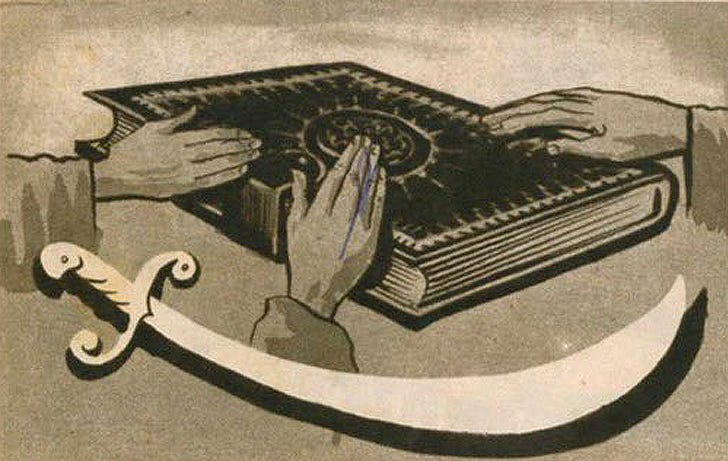
MBS provided two conditions to al-Wahhab for their new alliance: The first was that al-Wahhab would settle in Diriyah and counsel MBS as an advisor, and the second was that al-Wahhab would not oppose the collection of taxation by MBS. al-Wahhab agreed to the first, but given his recent experience in Uyayna, opposed the second. He argued that taxation would create natural animus between MBS and his people, and that MBS would acquire more wealth through conquest of enemies than by bleeding it from his own people. (To this day, no tax is imposed or collected by the Saudi government.)
MBS agreed, and the two men—champions of reason and debate— arose and embraced each other as brothers. According to Arabian historians, MBS declared:
"This oasis is yours, do not fear your enemies. By the name of God, if all Nejd was summoned to throw you out, we will never agree to expel you."
To which al-Wahhab replied:
“You are the settlement's chief and wise man. I want you to grant me an oath that you will perform jihad against the unbelievers. In return, you will be imam, leader of the Muslim community and I will be leader in religious matters."
The agreement was confirmed with a bay’ah (mutual oath of loyalty) in 1744, which is known as the Pact of Diriyah. They cemented their alliance by wedding MBS’s son to al-Wahhab’s daughter— a practice traditionally embraced by every culture around the world— and the two men set forth to restore their concept of morality and honor to Arabia.
This map shows the extent of the First State of Saud in 1814.
MBS named his empire in honor of his father, Saud bin Muhammad Al Muqrin. The First State lasted from 1727 until 1814, when MBS’s son and successor, Abdullah, attempted to take the Hashemite kingdom of Hejas, which had been under the control of the Ottoman Empire since the 16th century. Abdullah and his kinsmen were captured, taken to Istanbul and publicly beheaded. Abdullah’s head was then thrown into the waters of the Bosphorus, marking the end of the First State of Saud.
Evil does not create; It can only corrupt
This is where we will conclude this first article.
I have carefully curated what I perceive to be the most relevant information from the ocean of complex history from this region, all of which I believe is critical in order to understand and appreciate what will be presented next.
What I have found through my exhaustive research is that the key historical figures of this region— Hashim, his grandson Mohammad, and the original MBS— were actually men of honor and reason, and not the ruthless ideologues that western media has gaslit us into believing them to be.
In the next article, we will discuss the Hashemite Kingdom of Hejaz, their struggle to gain independence for Arabia from the Ottoman Empire, the British Cabal’s betrayal of the Hashemites, and the nefarious usurpation of the Hashemites’ stewardship over Islamic holy lands by British Intelligence via Abdulaziz bin Abdul Rahman Al Saud— the founder of the Kingdom of Saudi Arabia and grandfather to the current Crown Prince.
This connects directly with the creation of the Ikhwan ([Muslim] Brotherhood), the exportation of Wahhabism across the Middle East, and the rise of radical Islamic terrorism in the latter 20th century.
I believe that you will come to agree with me that the modern MBS is the Prodigal Son of the Islamic world, and on a redemption arc to liberate the entire Middle East from the global Puppet Masters, once and for all.
Badlands Media articles and features represent the opinions of the contributing authors and do not necessarily represent the views of Badlands Media itself.
If you enjoyed this contribution to Badlands Media, you can follow Ghost on Twitter and Truth Social.




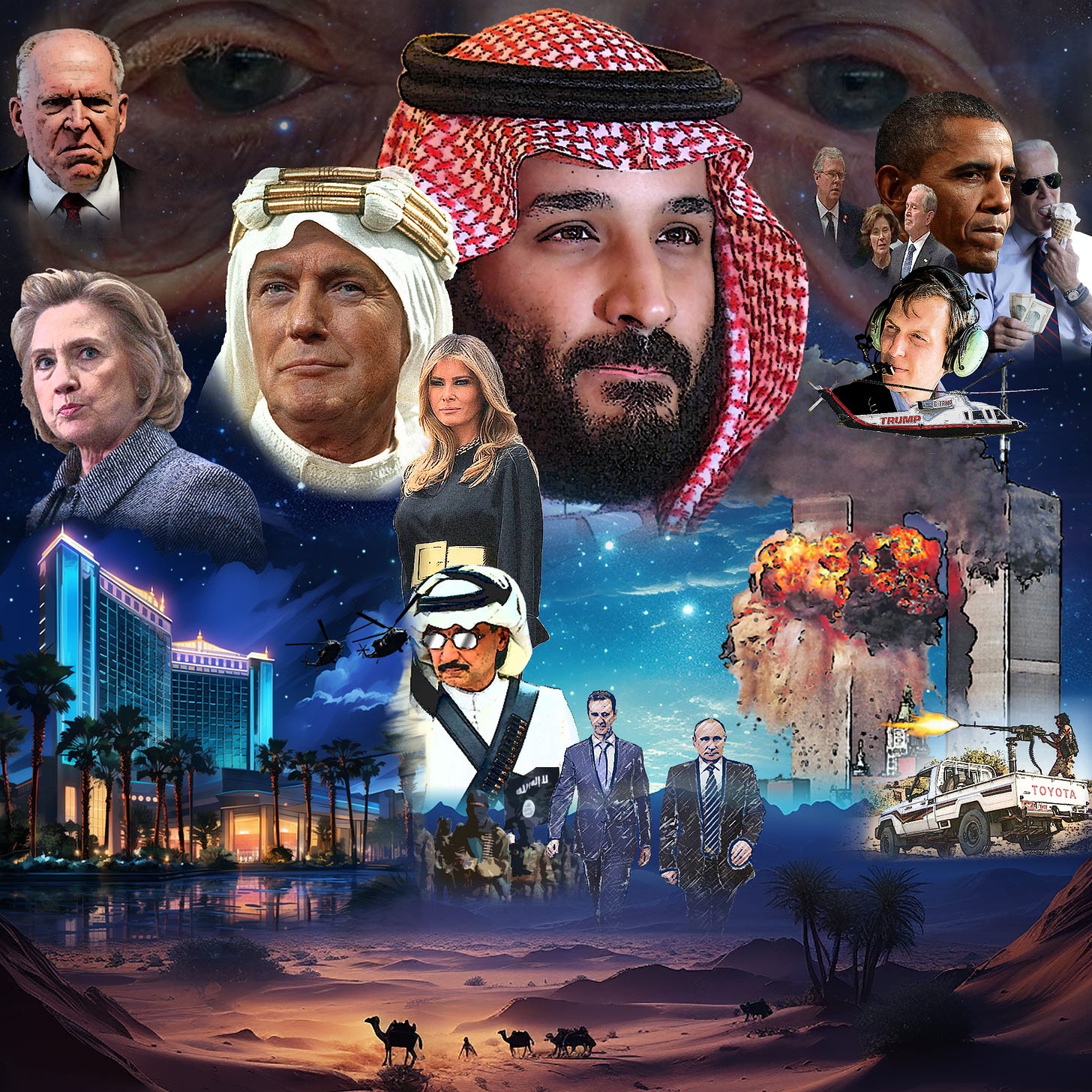
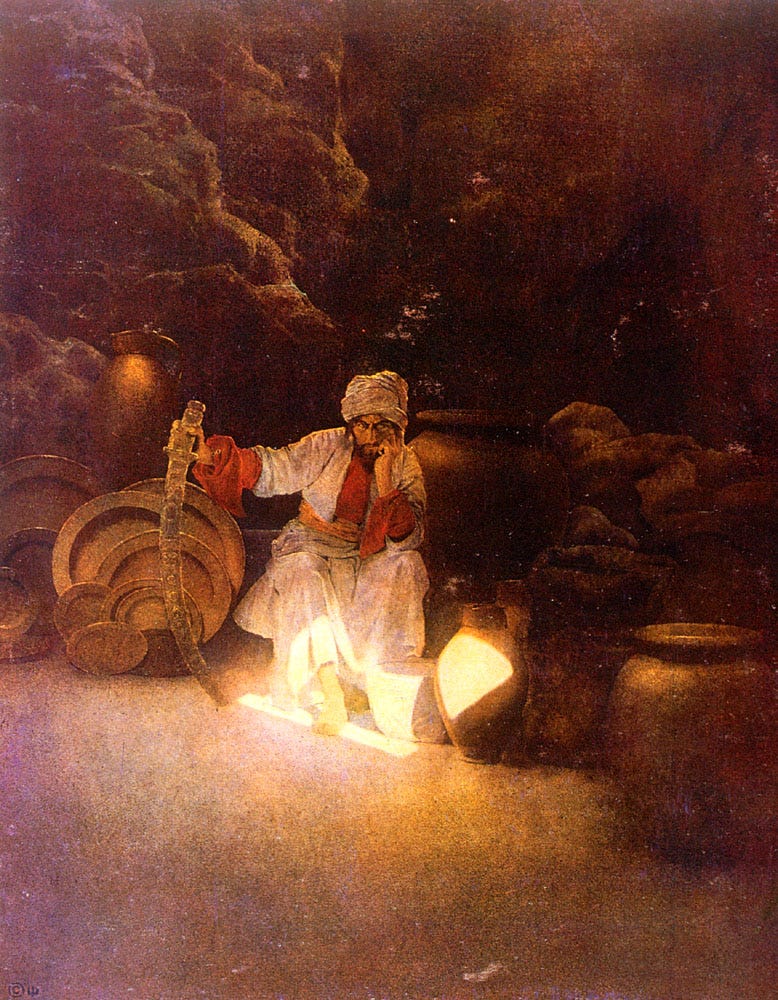
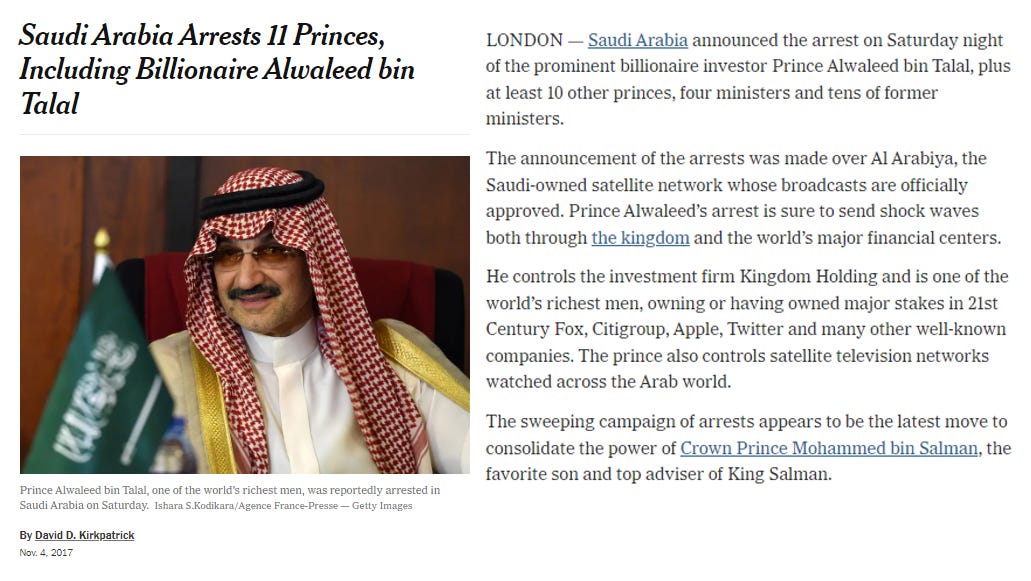
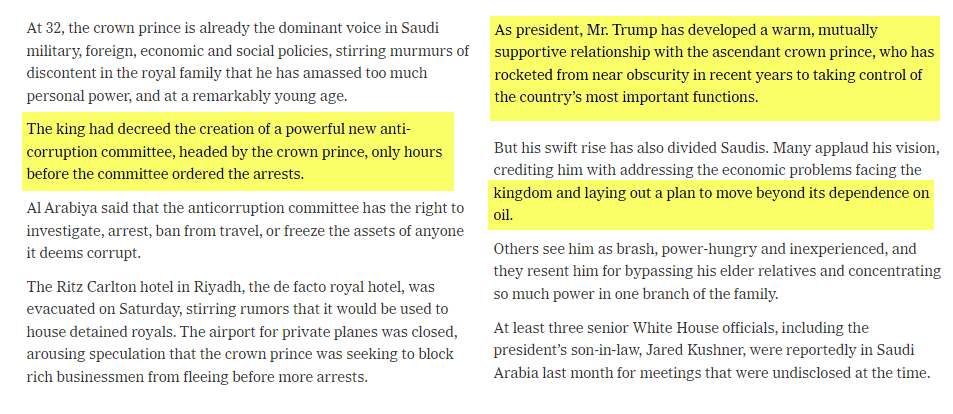
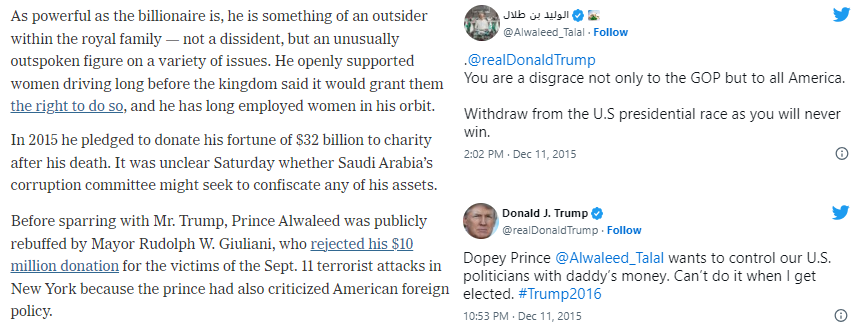

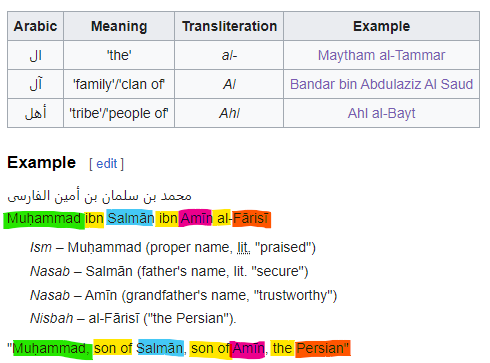
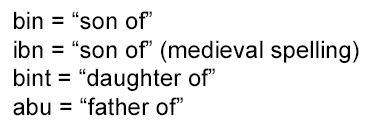

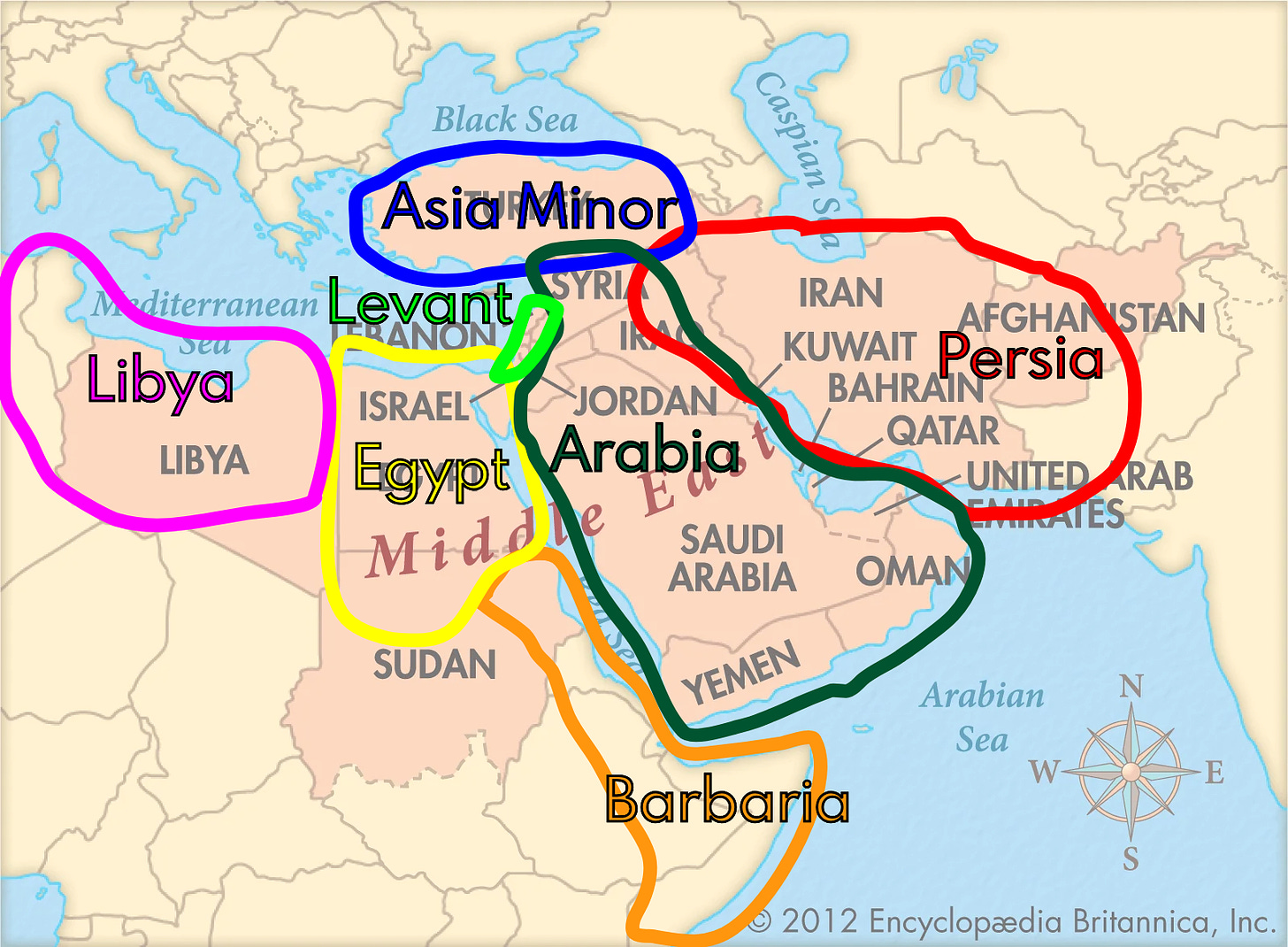
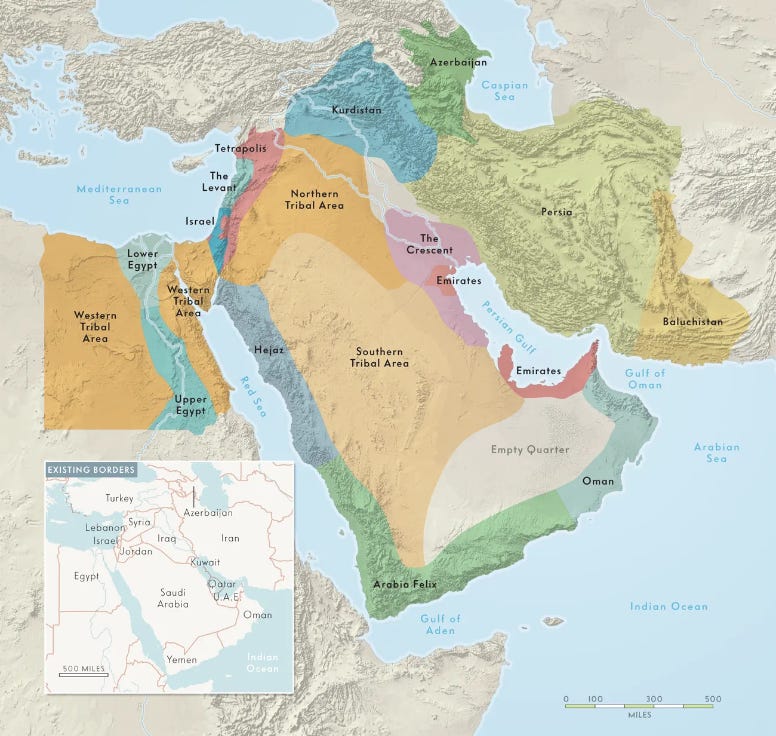
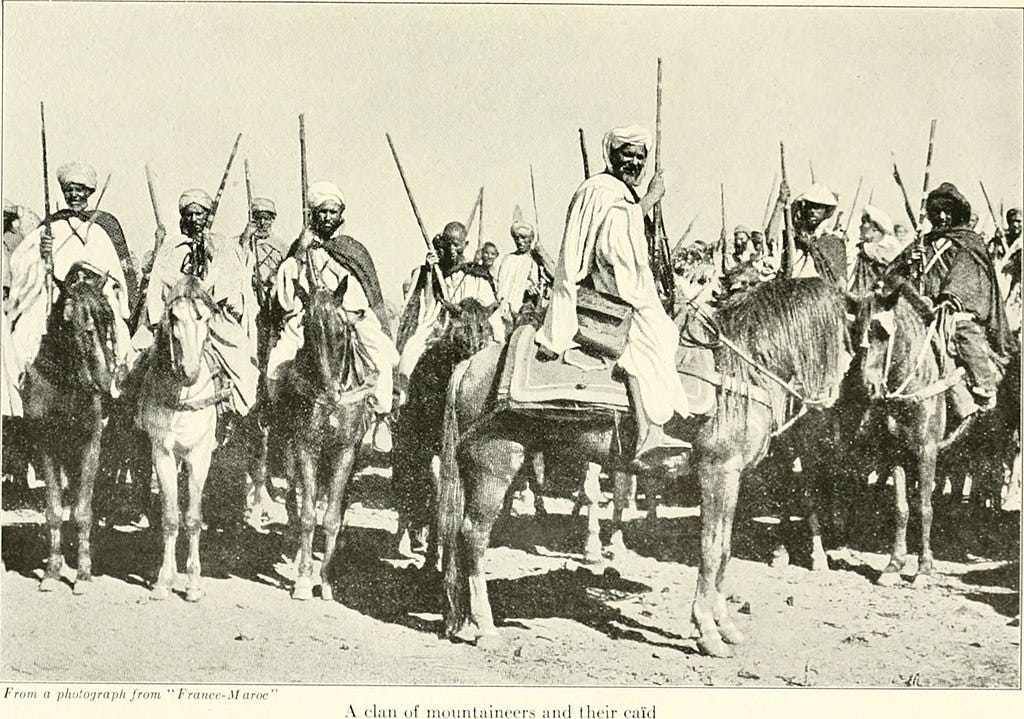
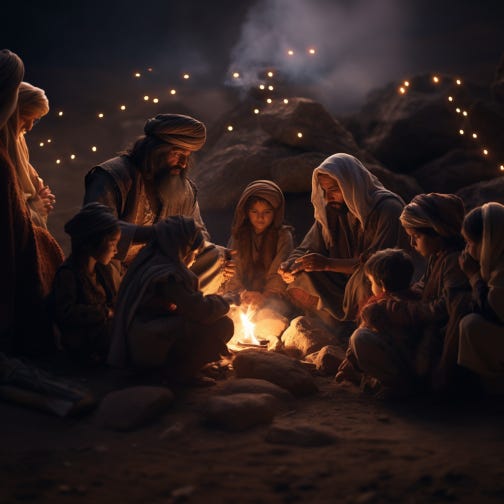
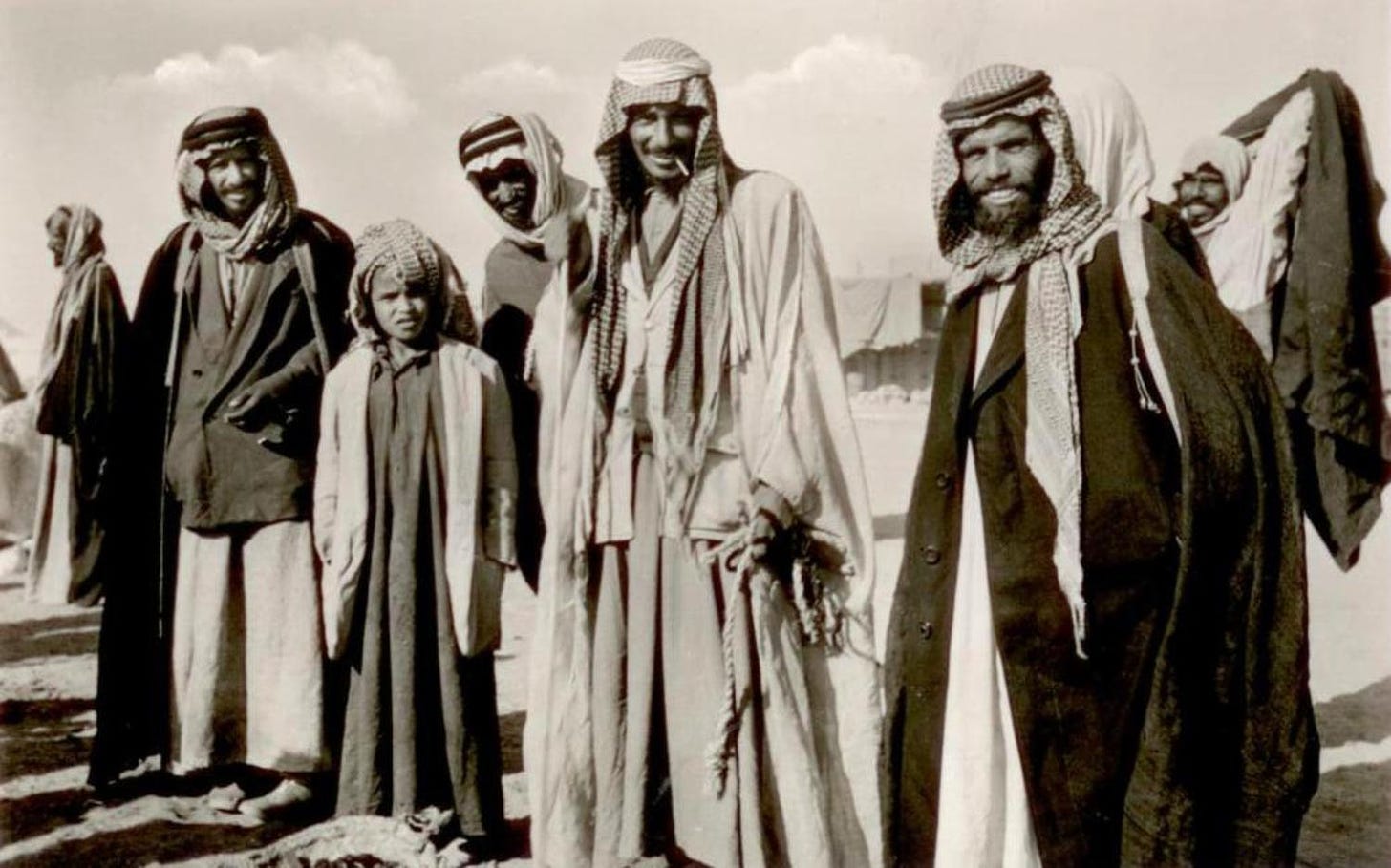
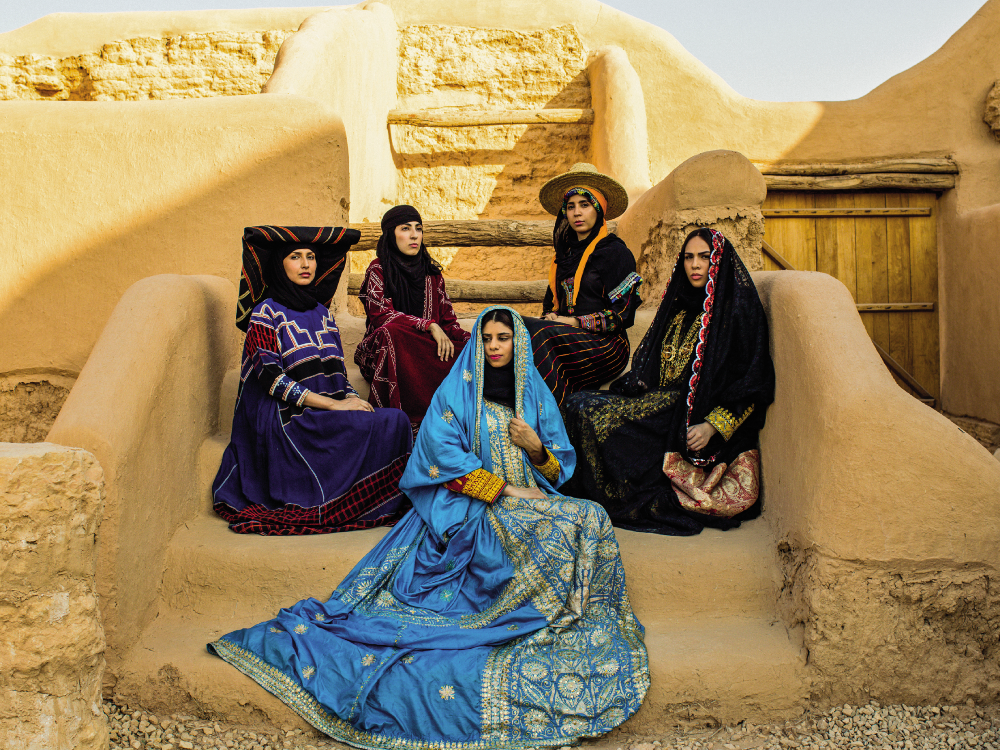
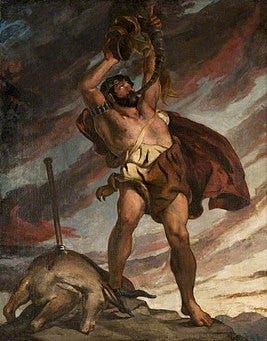
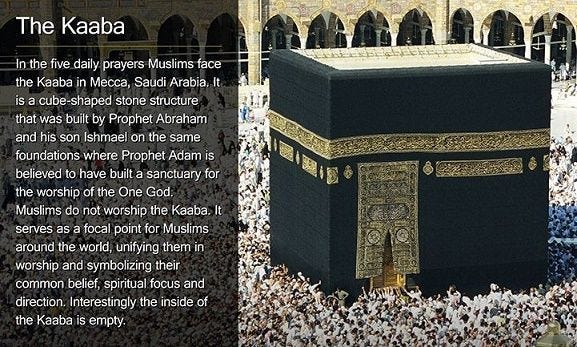
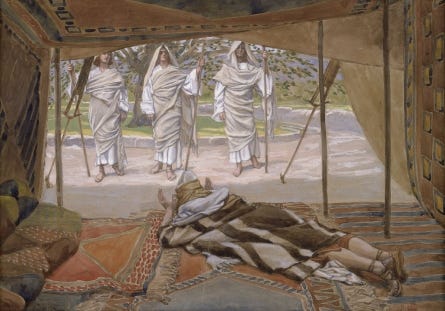
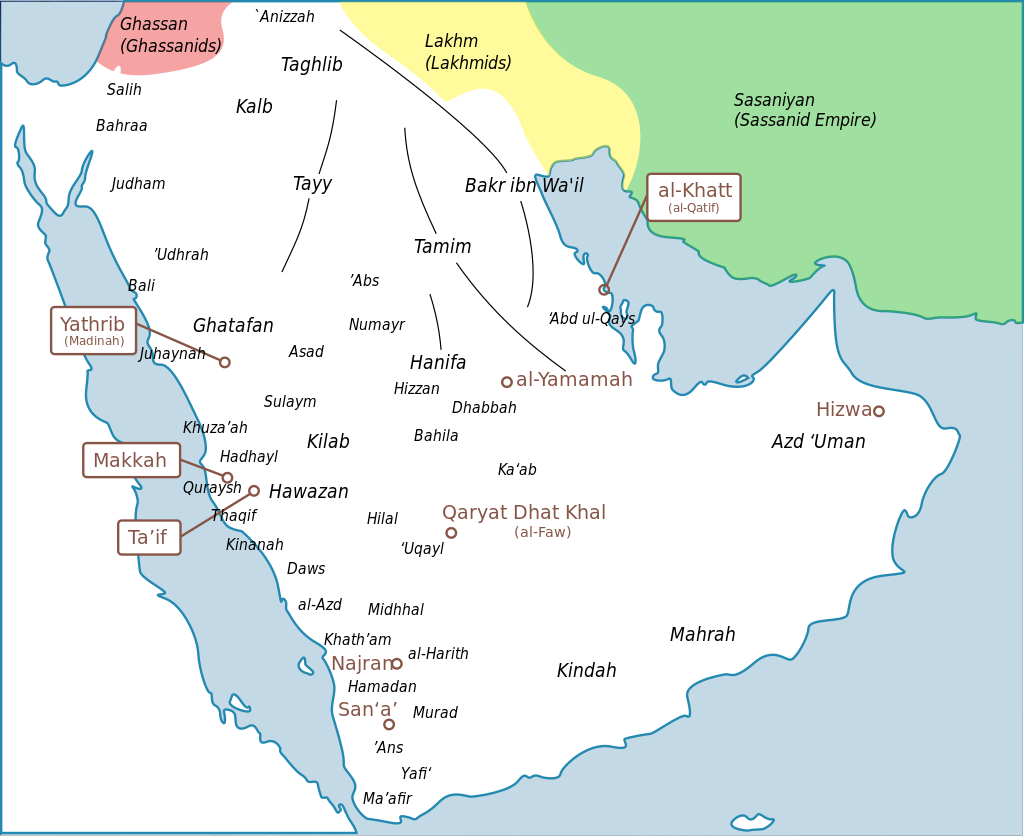
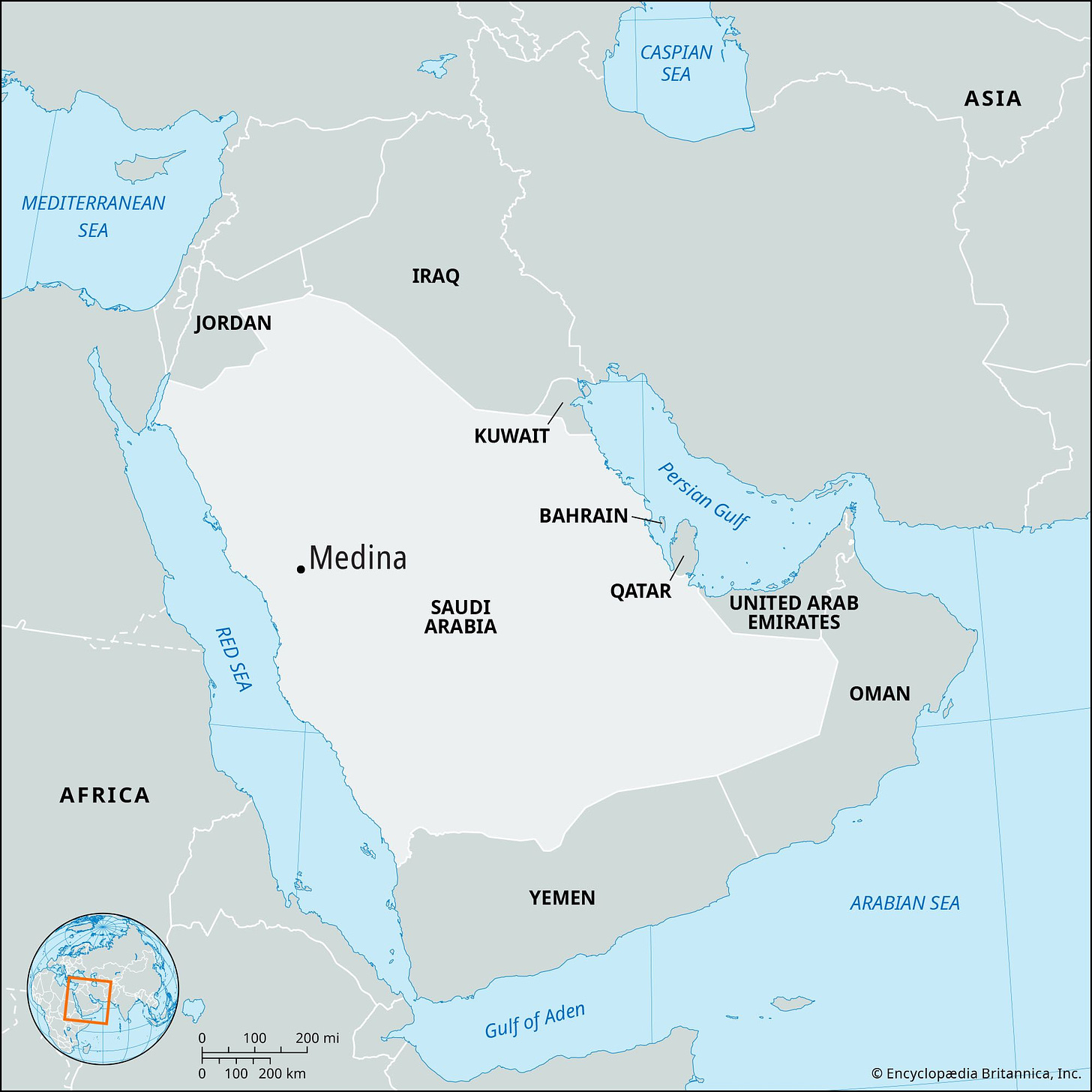
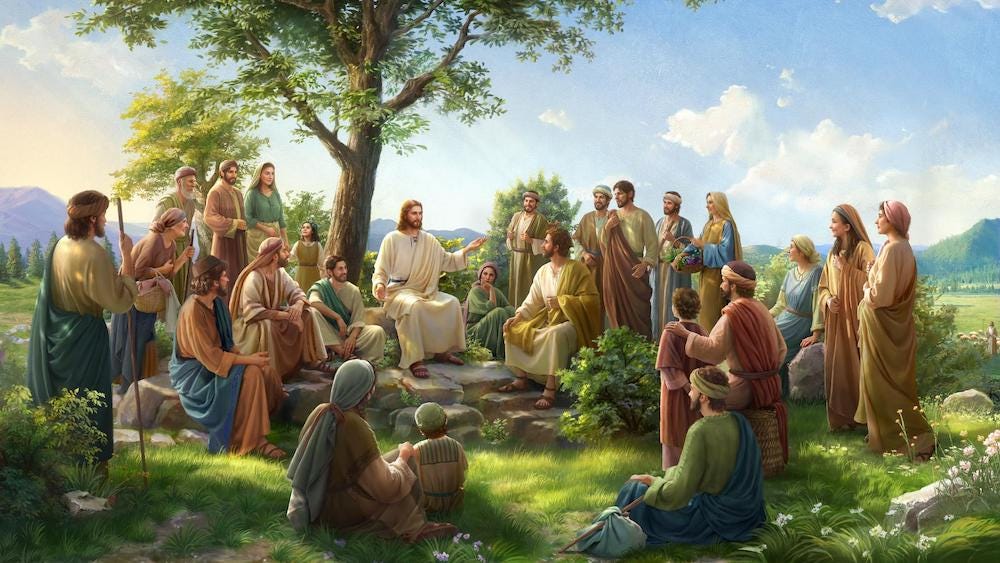
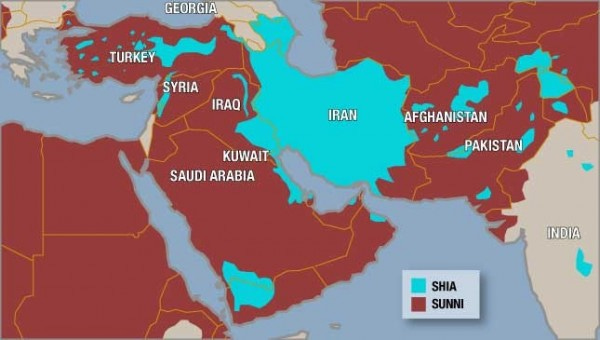
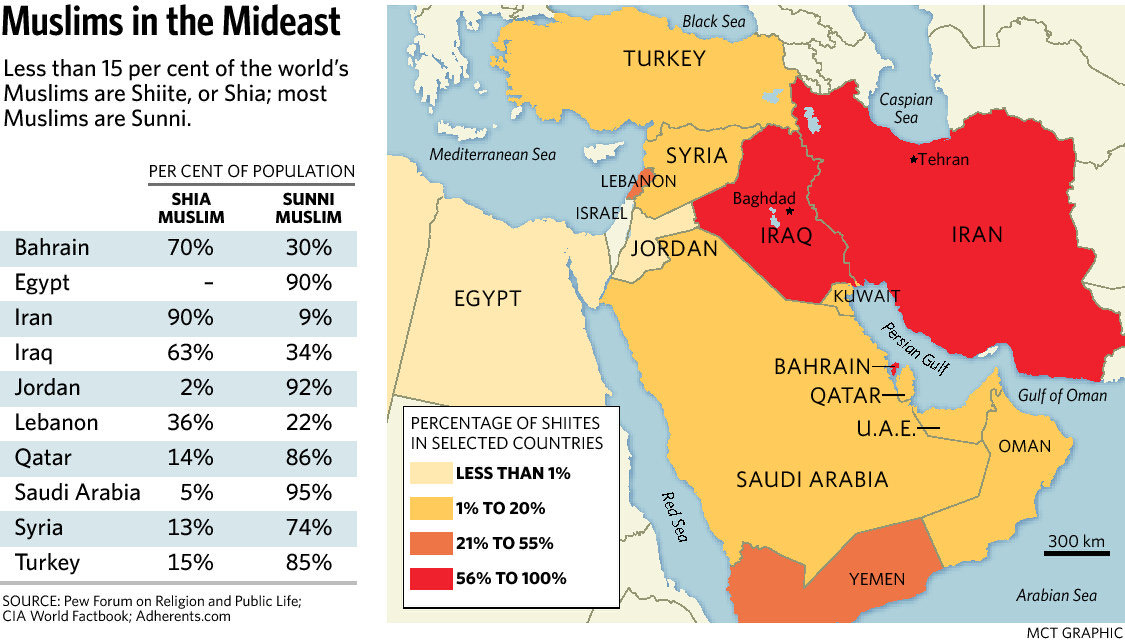
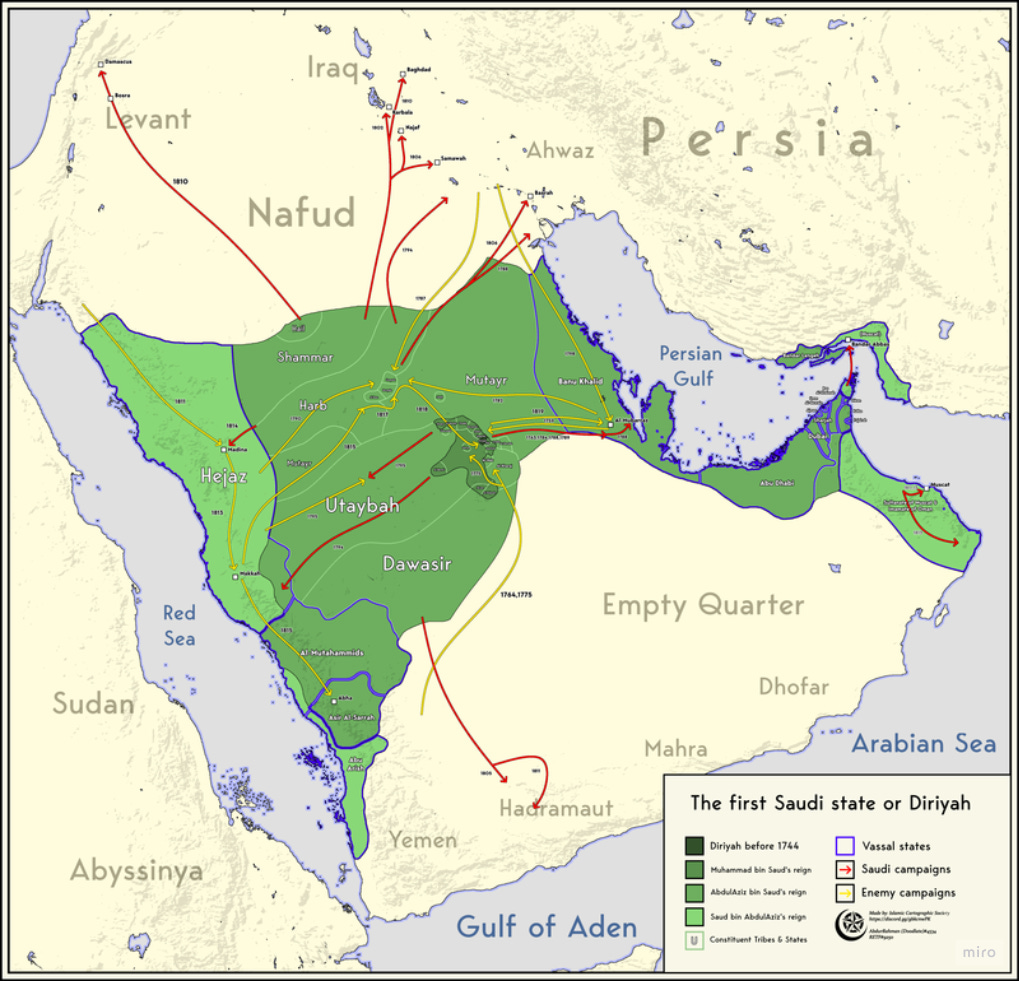
What a great detailed history on the region and people. I look forward to learning more my friend!
After my first reading, I was somewhat surprised at the attempt to sugar coat or downplay the violence associated with Muslims or as noted in the comments "whitewashed" so, I went back and read the article again and in some areas, again and again. My reason for doing so was my unschooled attempt to reconcile several things. One, over the course of my old career I travelled frequently to Malaysia (Muslim country) and encountered and worked with many Muslims. Secondly, I travelled frequently throughout Europe on business with a Muslim colleague of Algerian heritage. I mention these two points because I had a difficult time (at that time in my life) reconciling not only the intelligence of the people I worked with against the "evil Islamists" supposedly hell bent on taking over the world, to the oft repeated line that Islam is a religion of Peace. I had many long discussions with my European colleague as well as one manager at our Malaysian factory (he himself related to the local sheik) about the very nature of peaceful Islam against my Christian and Catholic upbringing, given that there were many violent episodes attributed to the Christians and Catholics of Europe and the Vatican. I was left puzzled and perplexed. How can these very nice folks be associated with this religion that calls for death to non-believers? Then I start to dig more and grow in my understanding, not only of Islam as well as Christianity, and I truly am no expert in either nor claim to be. Call me open minded and way beyond curious!
Which brings me to this article and the tie in the Sword Dance, and more importantly (to me anyway) to events unfolding around us as pointed out by Just Human and Burning Bright recently, that what is happening is perhaps not scripted per se, however certainly following a story line of sorts in that as DJT often is quoted as saying "we know/have it all..."
This article leaves me with a thirst for additional study of the region and players involved as well as making me say wow, there certainly is so much I do not understand yet somehow I feel comforted in the knowledge that the Badlands Media writers do know so much more than I ever will, and more importantly to events yet to come as directed by DJT.
I am thrilled to be reading these articles and look forward to part two. My apologies this comment is long, like I said sort of, giving me pause to reflect is an understatement. Take care and have a Blessed day!